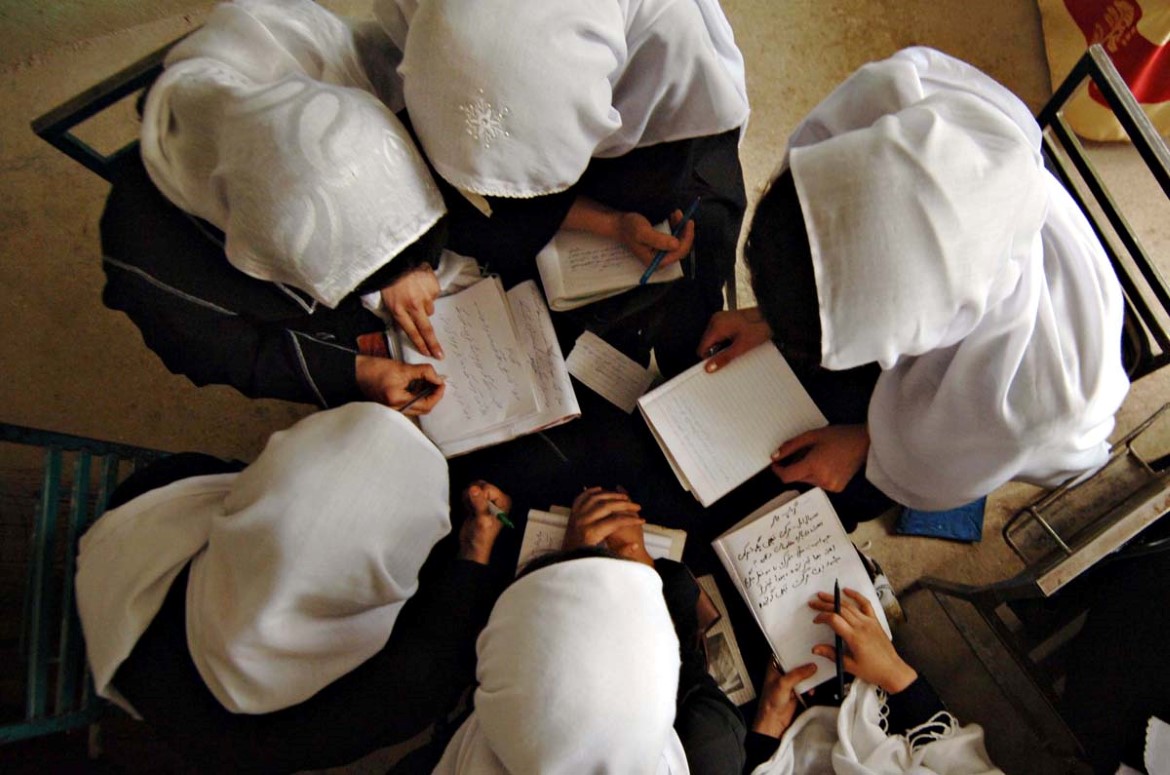
Education in war, emergencies and fragile situations
Norway is an important contributor to education as a component of humanitarian responses.
Children often pay the highest price in war, conflict and natural disasters. A large proportion of children who do not attend school are affected by emergencies. In many of the world’s poorest countries, armed conflicts continue to destroy education opportunities for whole generations of children.
For many children and local communities in conflict situations and emergencies, school can be a safe haven amid the insecurity of daily life.
Schools can provide protection, communicate important information, provide hope for the future and an opportunity to process experiences.
Emergencies can last for many years. A country in the process of stabilization and rebuilding will face many additional challenges if a whole generation of young adults lack basic knowledge, vocational training and higher education.
Only a small proportion of the resources devoted to global humanitarian aid is spent on education. Education is often very low on the list of priorities in humanitarian crises, where food, water and health are often viewed as the most essential life-saving assistance. However, international actors have been paying increasing attention to education in emergencies.
Reasons for interrupted education
In emergencies and conflict situations, education is often interrupted. The reasons for this are many and include the following:
- The school is no longer a safe place to be
- The school is being used for other purposes, such as shelter for IDPs or for military use
- The school and learning materials have been destroyed or removed
- The teachers are not coming to work
- The authorities have stopped transfers of funding to run the school
- People have had to flee from their area of residence
- Schools provide protection and security
Education provides physical, cognitive and psychosocial protection in disasters and long-term emergencies, and early reconstruction after conflicts and emergencies.
Schools can provide physical protection from exploitation and injury, for example kidnapping, child recruitment to armed forces, sexual abuse and violence. Schools can offer children this protection because they are thereby gathered in a safe place and are in the charge of responsible adults.
In emergencies it may be particularly important to provide information about landmines, conflict work and peacebuilding, or to impart knowledge about how to protect against HIV. This information can be disseminated by schools, thus creating security for people in emergencies.
Children and young people who are affected or traumatized by an emergency can more easily be taken care of and receive support if they are at school. The school can foster a sense of normality and a feeling of hope, stability and safety. Schooling can provide hope for the future for children, young people and adults in extremely difficult situations, and facilitate the transition to a state of peace, reconstruction and stability.
How Norway contributes
Norway is one of few countries globally that regards education as an explicit component of its humanitarian policy, and it is an important contributor to education in humanitarian responses.
Norwegian humanitarian aid for education in emergencies increased from 67 million NOK in 2013 to 474 million NOK in 2016, representing an increase from 2 to 9 per cent of the humanitarian budget. Many of Norway’s largest recipients of aid to education are in countries affected by conflict and crises.
Norway has worked with its partners to ensure predictable but adaptable aid flows in contexts of crisis and conflict. It took a leading role in the establishment of the Education Cannot Wait (ECW) fund, which provides both first response funding for education at the onset of an emergency and sustained funding support (3-5 years) to bridge the gap between immediate and long-term response. Norway has also contributed to the development of new funding modalities by the GPE.
Violence and attacks on students, teachers and education institutions are on the increase. The Safe Schools Declaration, developed through state consultations led by Norway and Argentina in Geneva, expresses political support for the protection and continuation of education in armed conflict. As of July 2017, 68 countries had endorsed the declaration, including many countries experiencing ongoing conflict.
Norway also supports international actors such as The Inter-Agency Network for Education in Emergencies (INEE).
Norway’s contribution to reaching children and young people in fragile situations is also channeled through organizations such as Save the Children and the Norwegian Refugee Council. Significant contributions are channeled to multilateral organizations such as UNICEF and UNESCO, as well as to the Global Partnership for Education (GPE).
Norway also helps to promote education in countries in fragile situations through various funding schemes, to for example Afghanistan, Ethiopia, Nepal, Niger, Pakistan, Palestine and South Sudan.
- Read more in the report Rising to the Challenge. Results of Norwegian education aid 2013-2016.
The right to education also applies in emergencies
- The Universal Declaration of Human Rights (1948)
- Convention (IV) relative to the Protection of Civilian Persons in Time of War (1949)
- Convention relating to the Status of Refugees (1951)
- International Covenant on Economic, Social and Cultural Rights (1966)
- Convention on the Rights of the Child (1989)
- The World Declaration on Education for All (Dakar, 2000
- UN Resolution on the Right to Education in Emergencies (2010)
- UN Security Council Resolution on Children and Armed Conflict ‒ Protect Schools and Hospitals
